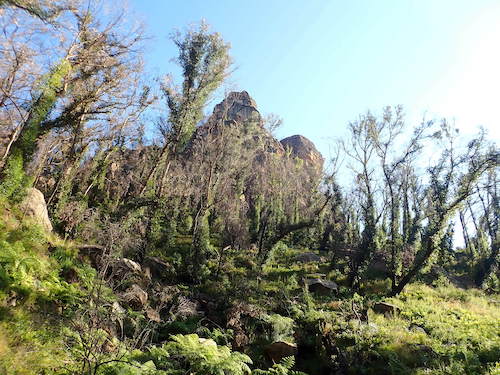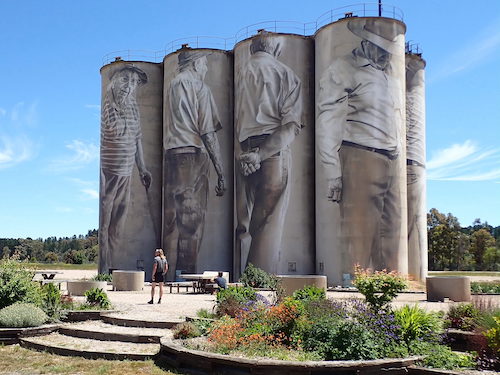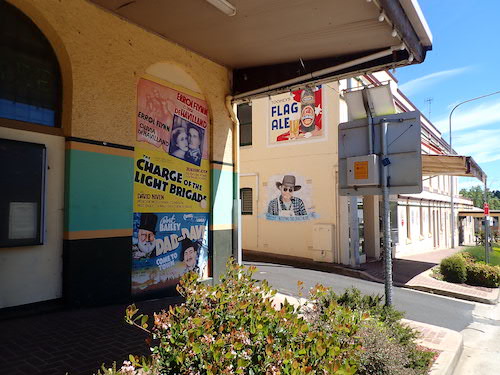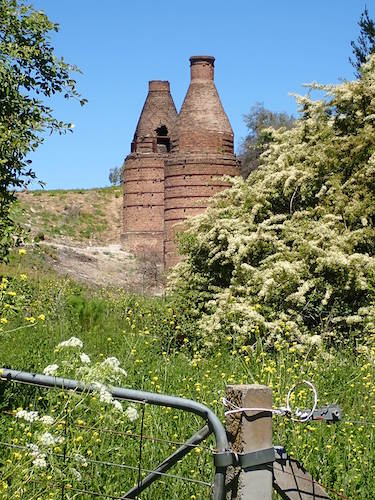Everything money can’t buy – Newnes
The village that uses this slogan on its entry sign is one of the least populated settlements in the Greater Blue Mountains. The surrounding sections of the Wollemi National Park suffered greatly in the Gospers Mountain fire of 2019/2020 but the vegetation closest to the old shale mining ruins was saved along with the present-day buildings. Now many of the trees along the road from Lidsdale feature sleeves of epicormic growth and, on a misty March morning, the shrubs near the Wolgan River glisten with the webs of thousands of orb spiders.

– Wolgan Gap, on the approach to Newnes
The only surviving building from the early 20th century shale days is the Newnes Hotel which was moved in the 1980s to stop the river undermining it, losing its liquor licence in the process. Now Lithgow Environment Group stalwart, Thomas Ebersoll, is modifying the hotel to include live-in staff quarters for management of the cabins and camping ground, so rapidly are they regaining their popularity.

Thomas is renowned for finding time for special projects. Although, kangaroos, wallabies and numerous bird species have returned to this part of the national park since the big fire, wombats are slow to come back. A striking wooden sculpture by Thomas is adorned with a message for a prodigal wombat, containing this wording:
Why I built this seat
A giant wombat reclined here,
long time ago.
His name was Bob.
As he sat & contemplated
the world he thought:
“Wouldn’t it be nice to have
a proper seat here”
He might be back one day.…

© Don Morison
[photos © Christine Davies]




